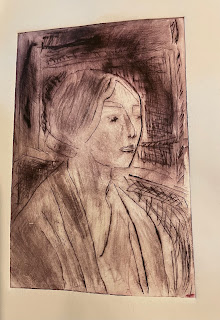Provence!!! What can I say? There are few places in my travels that compare with Provence. The weather is warm. The afternoons may get a little hot, but the heat is nothing compared to that of East Texas in the summer. If you decide to study at Crea Langues, the best time to come is early July, when the lavender is in full bloom. The color of lavender in full bloom cannot be captured in any photo. You have to see it in person. The bees go crazy. If you ride your bicycle next to a lavender field, you will run into dozens of bees. However, you needn't worry about being stung. The bees are more interested in the lavender than you. But do keep your mouth shut. The colors in Provence are absolutely amazing. It's little wonder that Van Gogh, Matisse, Cézanne, and Picasso loved this place.
Studying French at Crea Langues is more than just learning a new language. Your classmates will be interesting and have great stories to tell. The food here is exceptional. Christophe, our chef, is an absolute artist. The Monastère de Ségriès, where we stay, has a very large green house, so the fruit and vegetables don't get any fresher. For example, I usually do not eat tomatoes in the U.S., but the tomatoes here are delicious.
As I mentioned in my previous post, the other students are interesting. They are mostly European, but there is one other American. In the past, I have met students from Australia, but Australians are having a particularly difficult time traveling these days.





























